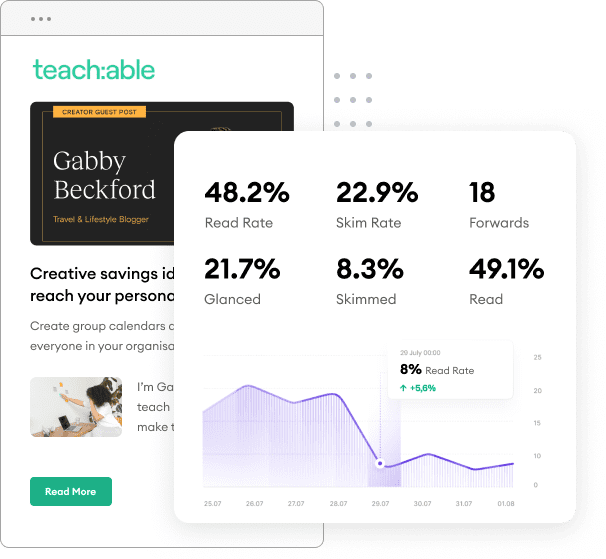How do you begin your content marketing strategy? Certainly, you don’t start on a whim—chances are you base your content strategy on your audience. But are you listening clear enough? Do you have the right information in place to reach the appropriate audience? Here are some strategies to utilize for social media listening.
The use of surveys works for both parties—you’re able to choose the questions you need to have answered, and your customers are able to voice their opinions without necessarily showing their identity. For example, social media platforms like Facebook make it easy to create your own survey directly on your page.
You can then take this information and apply it to your content marketing. Create blogs, FAQs, or a live stream to address any questions or comments your customers have.
Google Surveys 360 is also a great tool to use because you’re able to choose which audience you’re trying to reach. The tool allows you to offer incentives in exchange for survey answers. It then takes the answers and puts them in graphs for you to easily analyze the results. Learn more about the tool and all its features here.
As a marketer, you’re well aware of the power of keywords. If you’re using Google Analytics and the like to research your keywords, you’re already heading in the right direction. But have you considered how social media can help you find keywords?
Take a look at Tweets and Facebook and Instagram comments your customers leave. What are the top keywords they’re using? For example, if you’re a company that sells green cleaning products, you may notice unexpected words and phrases such as “DIY,” “best practices,” and “how-to.”
Hashtags are becoming more and more prevalent, even outside of their home on Twitter. Focus on hashtags that are relevant to your company via your Twitter, Facebook, Instagram, and Pinterest pages. You’ll be able to not only understand your audience better, but you’ll stay on top of the latest trends in social media.
Like anything else, you’re able to find more information, such as top posts and related content, via tools online. Keyhole is a great tool that allows you to dig deeper into a specific hashtag. For example, I typed in “green cleaning products” into the search bar, and this is what I found:
There’s tons of information, like how many times the hashtag is mentioned, you can pull through Keyhole that’ll help you better understand your audience. You can even search hashtags based on social media platform to give you more specific results.
Are you focusing on your current followers? Great information doesn’t only come from your current followers. Take a step further and see when your brand is mentioned elsewhere. Gather this information by using the search function on Facebook, or search for your brand via hashtags on Twitter. Here you’ll find information about the audience you’re not yet familiar with. This is especially helpful if these customers aren’t following you on social media—you’ll understand how customers who aren’t loyal feel about your brand.
If you’re not already using Google Alerts, you’re doing your brand a disservice. This is a great tool for automating your strategy, and easily finding when your brand is mentioned online.
Google Alerts also help with crisis intervention. If your brand is mentioned negatively online, you want to address those comments as soon as possible. Google Alerts notify you immediately when a customer is upset with your company so you can rectify the situation as quickly as possible. A negative comment can negatively impact your brand and put it at risk for loss of potential customers.
Because the internet moves quickly, you’ll need to respond to the latest trends and information quickly, too. As soon as you’re aware of trends and current news or shifts, plan on creating content to update immediately. If you make this strategy a habit, you’ll become a valuable source of information for your audience—and you’ll start to rank for popular trends in search engines.
Most likely you’re already looking within your industry at your competitors’ audiences. But it’s also helpful to expand your search beyond your own industry. Take a look at other industries that may be relevant to your niche to find gaps in your own strategy. For example, your green cleaning products brand may look at the audience of a mainstream cleaning products company. Use other industries’ strategies as a learning tool for your own brand.
As a marketer, you should always pay attention to trends—but you should also keep tabs on the emerging trends that may pop up in the future. Unfortunately, time travel isn’t an option, but actively listening to your audience and talk in your industry is just as productive.
For example, pay attention to any problems that no one in your industry has yet solved. Update yourself on any new startups that are popping up in your industry. Are there any apps or technologies that may affect your industry? The future moves fast, and you want to be at the forefront of any new innovations happening. You may also consider setting up a Preference Center, which you can learn more about here.
As your audience grows, so will your insights. Learning to listen to your audience in the world of social media doesn’t have to be difficult or time-consuming—it just means starting new habits to develop your brand presence online. Once you’ve discovered how to read your audience and discover trends, you’ll be on your way to building a successful content strategy.
Feature Image Credit: infornicle.com
